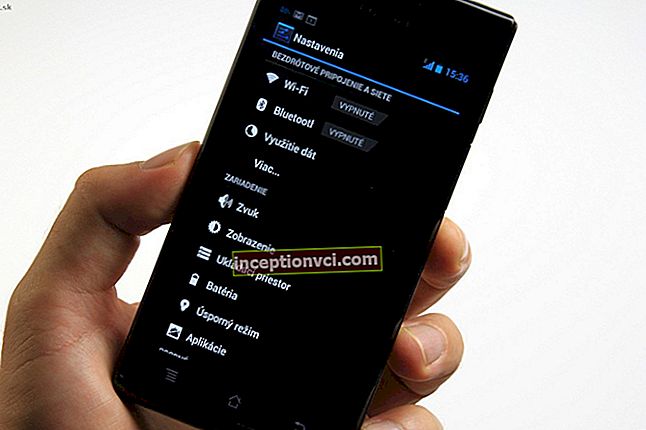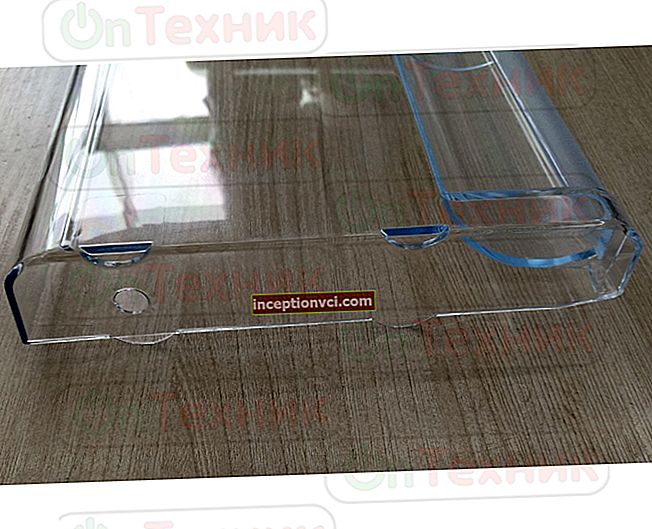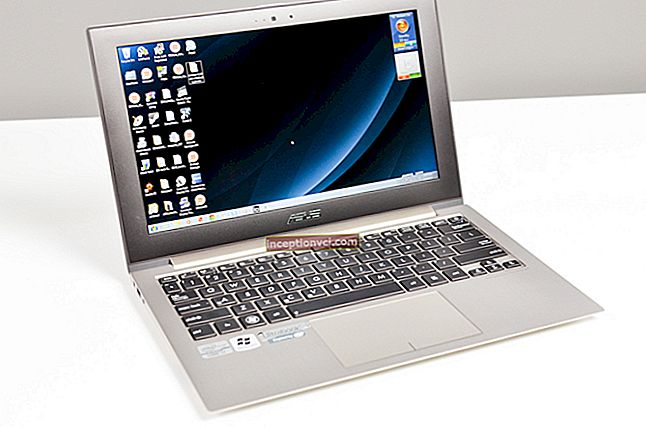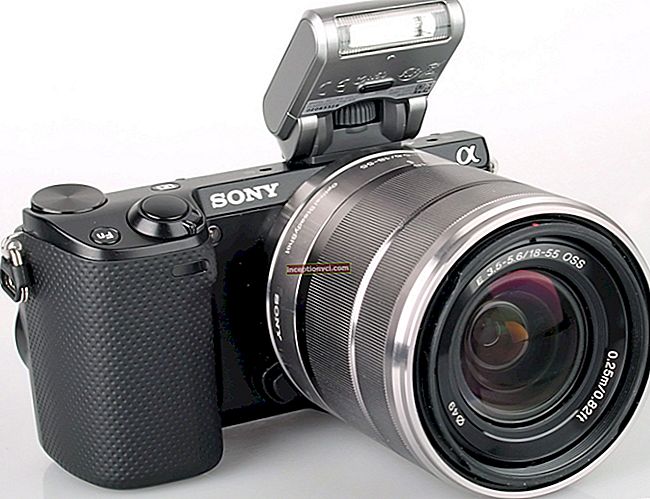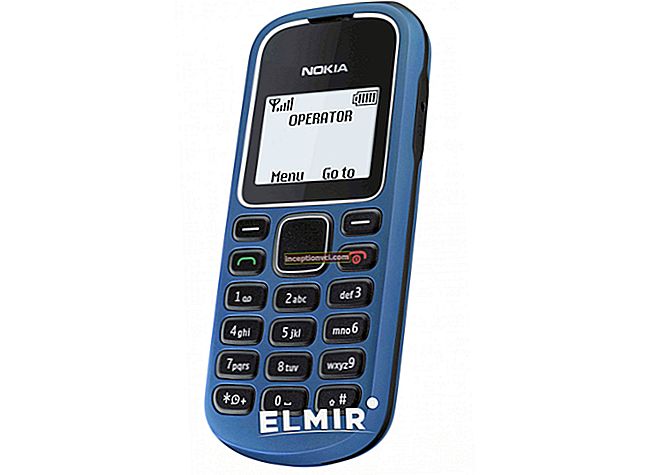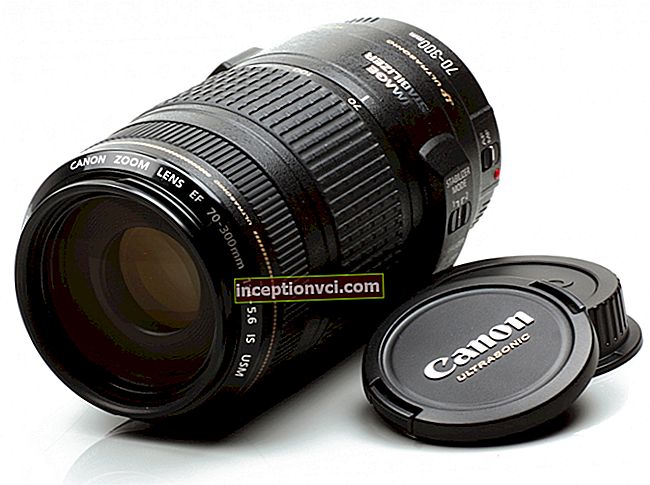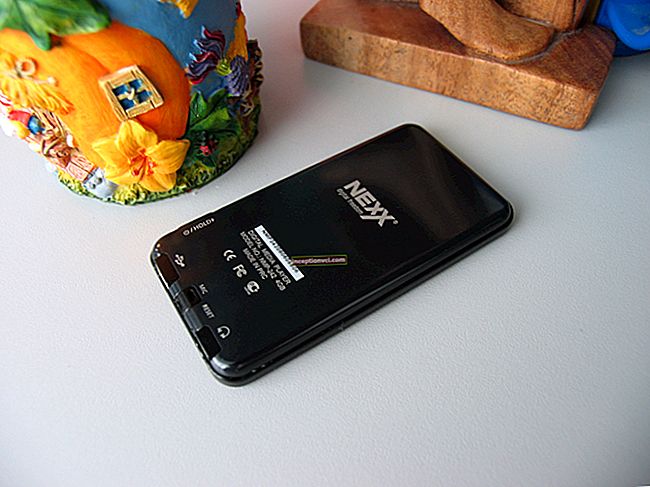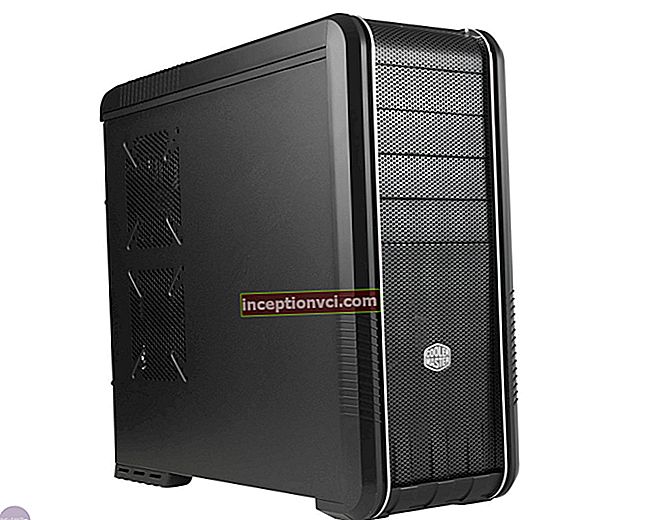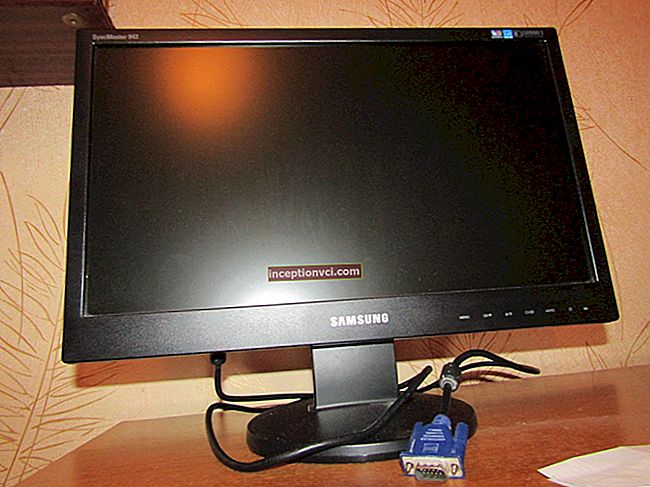 Samsung's G800 is a brand new phone from the company, designed specifically to compete with Nokia's flagship N95. You can talk about this based on many factors. For example, Samsung G600, which actually became the company's first phone with a 5-megapixel camera and has a smaller size, did not, unfortunately, become the undisputed leader of the line. A strange situation has developed: the Samsung G600 will turn out to be incredibly successful in sales, and in the perception of the manufacturer itself, the new G800 becomes the flagship. The reason is seen in the positioning of the Nokia N95. Samsung lacked a device in this segment of phones, but apparently there was no hope that the G800 would become widespread. The phone has ended up in a sort of premium product from Samsung.
Samsung's G800 is a brand new phone from the company, designed specifically to compete with Nokia's flagship N95. You can talk about this based on many factors. For example, Samsung G600, which actually became the company's first phone with a 5-megapixel camera and has a smaller size, did not, unfortunately, become the undisputed leader of the line. A strange situation has developed: the Samsung G600 will turn out to be incredibly successful in sales, and in the perception of the manufacturer itself, the new G800 becomes the flagship. The reason is seen in the positioning of the Nokia N95. Samsung lacked a device in this segment of phones, but apparently there was no hope that the G800 would become widespread. The phone has ended up in a sort of premium product from Samsung.
Contents of delivery:
Telephone
USB cable
Battery
MicroSD memory card
Wired stereo headset
Instructions
CD with software
Positioning
The model we are considering could not reach the consumer for a very long time, its creation began in December 2006. Since then, the design of the phone, the materials of the case have changed many times, and the appearance has also undergone changes. Few people know that at the same time Samsung was creating several models designed to fight the giant Nokia N95 with a whole range of products, but by September 2007 the Nokia N95 had become so popular that the fight against it had lost all common sense. Of course, now the company representatives will deny any connection between these wonderful devices, but there are too many glaring facts - the same dimensions, the same display diagonal, and so on. It is a pity, however, that Samsung's G810 did not reach the finish line, the device turned out to be a smaller copy of the G800, with Wi-Fi and a number of other software improvements. We can say that in fact the company found it necessary today to lay the brick for the success of future models and leave the competition with the most successful device of today from Nokia - N95.

Many of us may wonder why we are comparing Nokia N95 with Samsung G800 at all, because it may seem that these are devices of different ideology, one of them is a smartphone, and the second (Samsung G800) is a regular phone. They are related only by the size of the body and the presence of a 5-megapixel camera, it seems at first glance. The manufacturer positions the G800 as a price response to the Nokia N95, the company simply needs to have its own solution in this segment. What are its advantages for end consumers, and what can Samsung focus on? Of course, the quality of the camera and its capabilities, everything is extremely simple and quite transparent here. But at the same time, the Nokia N95 focuses on all technologies, and the camera is only one of them, but not at all the main one.


Running a little ahead, we can say that Samsung G800 has become a niche product due to a number of miscalculations at the stage of creation. This does not mean at all that the phone is not interesting, it just turns out that it is aimed primarily at a very narrow target audience, mainly those men who adore large and proven phones.
Samsung G800 design, dimensions, and controls
Initially, the focus was on the velvety plastic, which was then in vogue, with a soft touch effect, a fairly high-quality design of the phone case, and a standard dark blue color scheme similar to black. On the back, the plastic was made "under the skin", with a characteristic pattern for it. But at the last moment all this was changed, and by the beginning of September our model was completely transformed. If interested, the old design of the G800 can be seen in this photo.

But what happened

What is the reason for this decision? Several different factors appear to have played a role.Firstly, it is known that Nokia N95 has a not very high quality of the case, the plastic quickly peels off, and, of course, this annoys the owners of this not very cheap phone. That is why Samsung decided to clearly emphasize that the quality of their G800 will not be questioned, it deliberately tried to remove sharp corners. Secondly, no matter how trivial, in the changed picture of the mobile phone market, men began to join the audience of Samsung G800, and, accordingly, they had to be offered relevant materials. This material became metal, while the color also changed, becoming silver. It is possible, although unlikely, that the company will launch a line with other color solutions in the future. The maximum that you can count on is that some operator's phone can turn black, but it is unlikely that "cheerful" colors will appear on the market - like red, blue or light blue.

At that moment, when you look at the photo of Samsung G800, some association with certain Sony Ericsson models involuntarily comes to mind, and it is clear that Samsung's design looks a little more advantageous, the phone is more like a camera. Unwittingly, the imagination perceives the size of the phone as an ordinary, average device. However, the Samsung G800 is actually quite large, and this concerns not only the size. In principle, they are comparable to the dimensions of the same Nokia N95. It looks big and feels big. Its size is 101x51.1x18 mm and weighs 146 grams. It is strange that the official specifications for some reason indicate a weight of 134 grams, although it refers, as it turns out, to the previous version, which is devoid of metal elements. In fact, the phone is made of metal - the lens cover, the bezel for the front panel, and the cover for the back of the case. Here they used the same solution as in Sony Ericsson T650i, in which a metal plate is fixed to a plastic base, together making up the back cover. The chassis of our device is made of plastic, and there is a lot of it here. Compared to other models, the G800 will certainly look rather massive, and this is the contribution of the weight of the plastic parts of the case.


Interestingly, with the dimensions that the company provides, not everything is in order either. Having started declaring the size of the thinnest area of the case back on Samsung X820, the company quickly got a taste and, as it were, ignores all the other protruding parts. For example, in the case of Samsung G800, this is manifested in the fact that the lens cover, which adds 4 mm of thickness, is for some reason not taken into account. In our opinion, this approach is unacceptable, since it deeply misleads buyers.



The metal parts on the back of the phone are on par with the LG Shine, they are polished and scratch easily. The lens curtain in your clothing pocket is covered with small scratches in about a week. Although the scuffs are visible, if you just look closely at the G800, they will not be so noticeable in your hands at a distance of a meter.
The build quality is not bad, the phone gives the impression of being reliable, and it is not very scary to drop it. It's about size and materials. In our opinion, this is like an ideal car for obese men, the device will match them.

The mechanism of our slider is equipped with automatic fine-tuning of movement, but it cannot be called very smooth, because of the considerable massiveness of the case. There is no finger rest, it always rests approximately in the middle of the screen, which seems to be the most convenient way.

At the top there are two loudspeakers, which are recessed into the body, and a metal mesh is visible in the slots. This is an interesting design element, although it is superfluous, since the grilles are practically lost, they are so much hidden. It would be possible to take them out, for example, as is done in the Nokia N81.
The charger connector is on the left side, the headset (a new type that has become a standard interface connector) is here, and right there is a slot for a microSD memory card. Both of these connectors are covered with plastic caps that are attached to the case.Also on the left side, closer to the bottom end, there is a strap attachment, however, it is difficult to imagine that there will be someone who will wear the device around the neck.


The camera key is located on the right side, it is designed in the corresponding style. There is also a coupled volume control button, which also makes it possible to zoom in on the picture while shooting.

Display
The display has a resolution of 320x240 pixels (36x49 mm), a screen diagonal of 2.4 inches. The display is made using TFT technology and can display up to 262K colors. It displays the picture well, vividly, and the color rendition does not suffer even in the sun, although in very bright lighting the colors become faded.
The screen can easily accommodate up to 8 lines of text and up to 3 service lines, the font size is above average when compared with other phones. Quite a large diagonal, perfectly readable font - this model seems to have been created for people with not very good eyesight. There is no irony in these words, today the market offers very few mobile phones for people with vision problems, many manufacturers have simply forgotten this segment of consumers.
If 8 lines of text are available in most modes, for example, when reading SMS-messages, while browsing the Internet, an average of 15-20 lines of information fits on the screen. Everything will depend on the scale of the displayed page.
In the following photos you can see the quality of the screen in comparison with the Nokia N95. Samsung's display undeniably benefits from picture quality and brightness. Compared to the G800, the screen of Nokia N95 looks very dull, lifeless, gloomy.




Keyboard
This phone does not have a touch keyboard, and this once again confirms the favorable trend that has emerged. Due to the fact that the model is wide enough, there is plenty of room for function keys, as well as a navigation button, and therefore they are quite convenient. The phone's numeric keypad is made in the RAZR style, it is a metal plate. When pressed, the stroke of the buttons is not very large, and here again the size plays a role, working with the keyboard is quite comfortable. The keys are highlighted in white, it is clearly visible. The device does not have a light indicator, but as an alternative, the time when the backlight will work is adjusted. For example, for daytime, the backlight in the menu can be turned off. This is not to say that it is always convenient, because sometimes we are in passages, entrances, in a word, in various places where there is not enough lighting.



Battery
Incredibly, a phone of this level uses a 960 mAh Li-Ion battery. There is plenty of room here for a larger battery. The manufacturer claims that the battery can last up to 250 hours in standby mode and up to 2.5 hours of talk time. In the conditions of European mobile networks, the device, in nonsense, worked for about two and a half days with only an hour of calls, despite the fact that only the alarm clock was used. At the same time, in Kiev networks, with one and a half hours of calls a day, it was enough for only 2 days. From this we can conclude that this model will work for about 2 days with an average load, although 3 days with a minimum load are achievable. The battery charging time is approximately 1.5 hours. Unfortunately, a high-capacity battery is not available for this model.

Bluetooth, USB, communication capabilities
Bluetooth. Samsung G800 supports various profiles. Among them, in particular, Headset, File Transfer, Serial Port, Dial Up Networking, Basic Printing, Object Push, A2DP, Handsfree. Bluetooth version 2.0, EDR support. Working with headsets is pretty commonplace, it doesn't raise any questions.
USB connection. The menu allows you to choose one of three available operating modes: Samsung PC Studio, Media, Mass Storage. There is no modem mode for the phone, there is no corresponding setting in PC Studio, as well as drivers. Let's hope they will appear later.
In the USB Mass Storage mode, the phone is perfectly picked up without using additional drivers, the necessary data can be copied. The USB version is 2, and the data transfer rate is approximately 2000-2200 Kb / s.
When connected to a computer, the simultaneous operation of USB and Bluetooth is unacceptable, the device forces you to turn off Bluetooth regardless of the current state (it does not matter if there is transmission and connection or not), this is very inconvenient.
The unit is charged during the USB connection.
In UMTS networks, HSDPA allows speeds up to 3.6 Mb / s, and for GSM networks, EDGE class 10 is provided.
Memory and memory cards
The phone has 160 Mb of its own built-in memory and practically all this memory is available to the user from the very beginning. External memory is visible separately, the ability to simultaneously access data from both types of memory is not provided. There is a file manager that allows you to copy data both from the card and to the card. The cards are hot swappable. We tested the operation of 2 GB microSD cards, but the 4 GB card was not recognized in our device. It is likely that support for high capacity memory cards will be available in future software releases.
Performance
Compared to GSM-models, the 3rd generation phones from Samsung have a slightly higher performance, although the differences are not critical, but noticeable. In general, the manufacturer Samsung can be considered catching up to the market, since its devices usually use processors with a rather low clock frequency, there is no full support for Java specifications. On the considered device, installation of any additional applications can be carried out only over the air (via Wap).
Camera
In general, the camera is a key function in the G800, and they tried to create it as similar as possible to a conventional digital point-and-shoot camera, and judging by its size and appearance, it was quite successful. The phone uses a 1 / 3.2-inch CMOS matrix. Possible optical zoom - x3. The lens is hidden under the shutter, opening the shutter automatically starts the camera. In order to finally highlight the impressive capabilities of the camera, a xenon flash is used here instead of the usual LED flash.


Let's figure out together what all the innovations of the device give, but first, let's go through the key camera modes.
It implements the viewfinder menu familiar to the user, no icons are displayed by default, but you can turn them on if necessary. In addition, you can use the grid mode, probably, it will be useful to someone for building compositions. In Samsung G800, the camera has retained most of the settings and capabilities from previous models, for example, from Samsung G600. At the same time, new functions appeared, such as the automatic panorama mode and face detection.
To the pleasing moments it is necessary to carry the ability to call a quick call of functions by using the keyboard. You can adjust any camera settings with one touch, you can go to the gallery or to the video recording mode. In fact, if you like to shoot a lot and use the settings, the available shortcuts will allow you to do it literally with one touch. Another thing is that opening the slider is not very convenient here, while in the same Samsung G600 it is simply necessary, since the lens is hidden on the upper half of the device.
Pressing the navigation button is responsible for switching between operating modes (macro, flash, etc.). Now let's take a look at the main camera settings.
File compression can be performed according to three parameters (Economy, Normal, High). It is worth using the best option, since the difference in the quality of the maximum resolution photo is quite noticeable, especially if you plan to view the images on a computer.


The camera supports the following resolutions:
640x480 dots
1280x960 dots
1600x1200 dots
2560x1920 dots

The Samsung G800 camera has autofocus, but there are no separate metering settings for the center point or for the whole picture.Then there was a mode of automatic face detection (Face Detection mode). With its help, the face is detected in the picture (during portrait shooting), and the device automatically adjusts all parameters for this particular type of shooting. Although, in practice, we did not notice the difference between the Face Detection mode and the usual settings. The white balance was set to automatic by default, however, if desired, in manual mode, you can select Incandescent, Daylight, Fluorescent, Sunset, Cloudy. The number of provided modes will be interesting for those who like to dig into the camera settings, which is more suitable, note, for a digital device than for a phone, the basic principle of which is different (I took it out quickly and took a picture).











The shutter sound can be turned off, as well as the sound of the optical zoom. The phone has 12x zoom (x4 digital and x3 optical). In our opinion, the optical zoom does not provide much improvement in the picture. Although, perhaps, it can be interesting when shooting, for example, objects at a short distance. However, see for yourself. In the photos below, you can see the original image without zooming, then with maximum optical and digital zoom.

(+) maximize, 2560x1920, JPEG

(+) maximize, 2560x1920, JPEG

(+) maximize, 2560x1920, JPEG
The brightness of the image can be adjusted from -2 to +2, and by default it is set to 0. In addition, in the settings you can set the sharpness of the photo. Although, given that this is a filter, please, you should not touch it, this will not change the quality of the picture, but it will be quite difficult to edit it on a computer even with a strong desire (the loss of information when using such a filter is inevitable).
When shooting, the camera allows you to apply a number of effects to photos, in particular, Sepia, Negative, Gray, Watercolor, Antique. Taking into account the fact that the image editor built into the device has the same capabilities, you should not "spoil" the original photo.






Although the frames differ in variety, the resolution, if applied, is automatically reduced to a modest 320x240 pixels.
Also in the settings it is possible to specify the default name of the picture, set the matrix sensitivity (from the available Auto, ISO 50, ISO 100, ISO 200, ISO 400). We recommend using the auto mode, because in most cases it works correctly. In addition, there is not much difference between photographs with different sensor sensitivity is not visible in normal conditions, you are unlikely to detect changes in the finished photograph. A timer designed for taking pictures of yourself surrounded by friends can be set to 3, 5 or 10 seconds.
The effect of blurry shots can be avoided by the optical stabilizer if the shaking is not very large. The feature actually works and it's worth noting that it works great. You can compare the picture taken with the Nokia N95 in a moving subway and the same with the Samsung G800. The difference is visible to the naked eye.


Also, the matrix mode switches the camera to the lowest resolution (320x240 pixels), but you will get a picture consisting of 4 pieces (2x2). This is a rather curious mode, it may be interesting for some people to experiment, but no more.
Several options are available for burst shooting, in particular, you can take 6 shots at high speed (almost instantaneous), or at normal speed (the interval between shots is about one second). In addition, modes are available that allow you to take 9 and 15 pictures. Let's make a reservation that this function may be interesting for use at the photo finish in a competition. At the same time, in real life, when you move the camera, in most cases, the pictures will turn out to be blurry. In this layout mode, the available resolution for photos is 320x240 pixels.
Panorama mode works automatically in comparison with Samsung G600 and other phones. You can choose from how many pieces your panorama will be "glued together", 3, 4, 5 or 6 pictures are available. You aim at the very first subject and shoot.You don't need to align the viewfinder image with the previous image at all, just try to move the camera slowly to the right. The device will automatically take the next picture. Although the mode is designed for a mass user, the result is not always good. If during the shooting someone passes in front of your lens, you can assume that everything will have to start from the beginning, the camera does not "catch" the picture, something gets confused in the settings. I would like to have an alternative to combine photos in manual mode, for example, as it was decided in the Samsung G600.
The resolution of the finished panorama will vary depending on how many fragments you have chosen.


All photos are stored in the album, here you can view information about each specific photo. Any photo can be correlated directly from the album with a contact from the phone book or set as a screensaver. There is both a slideshow mode and a simple editor that allows you to add emoticons to photos, apply frames and effects.


Compared to the Samsung G600, we got unexpected results. Expectation, the best optics found in the Samsung G800 just has to deliver better results in the form of snapshots. Who would argue that a camera with an optical zoom has a better lens? But in our opinion, such reasoning is a delusion. It is impossible to conclude on one of the options about the quality of the resulting images or the lens, and therefore we decided to check how everything will turn out in reality.
/ Samsung G600 / Samsung G800




The result is simply amazing. Firstly, there is simply no qualitative leap in the Samsung G800 in comparison with the Samsung G600. Both cameras are in approximately the same class. It's another matter that the color rendering in Samsung G600 is more vivid and closer to the original. Another point that requires attention - the pictures taken from Samsung G800 are noisy, and this makes the picture not so good for perception.
The next step in our research was to compare the pictures taken with the Nokia N95, this cameraphone has been on the market for a long time and, by and large, has become a reference for tests of this kind. Let's see the photos, no comments yet.
/ Nokia N95




Well, what can be noted when comparing images from these two cameras? The quality of the Samsung G800 is nevertheless closer to the Samsung G600, and in clear weather the images obtained are quite comparable, and the differences are not so noticeable. The main disadvantages of the camera are noise, blurring details, this is especially noticeable in low or side lighting. At the same time, the camera displays details on snitches well. Notice that the letters on the poster, for example, have a distinct edge pattern. But the color scheme suffers at the same time. For example, the sky is painted in a completely different color. The hardware of the camera, or rather, its lens, is very up to par. In general, it turns out that for Samsung today, it is the algorithms for processing images that remain an unfinished place. And this is surprising considering the fact that the company has very rich experience in its own market, where it uses modules with very high resolution, and, in addition, has developments in the field of photography. Apparently, the individual divisions of Samsung do not cooperate closely enough, and this results in a similar result.
It was curious to see what a xenon flash was capable of. Actually, not that much. The problem is the same as in the Sony Ericsson K800. Xenon flash really works well only at medium distances, but is useless at short or long distances. Specifically, in the case of the Samsung G800, it turned out that the automatic does not always work correctly with the flash, and this often leads to worse results than without it.


It remains to show a few shots taken in macro mode, and that's where the story about the Samsung G800 camera ends. For shooting in macro mode, the effective distance is about 10 cm. The optical zoom does not work in this case, which is logical.The pictures are of average quality, it cannot be said that they are perfect. For example, the Sony Ericsson K850i produces much better macro quality, and none of the mobile phones can compete with it in terms of this quality.


Video recording
The device supports recording videos in mpeg4 format at maximum resolution, and in the settings you can specify whether you want to record a video with or without sound. All settings are similar with settings for photos, all the same 3 types of possible quality, but video resolutions are different, plus other effects are supported. For video, the maximum resolution is 320x240 pixels (15 frames / sec); in terms of video quality, this model is one of the best on the market today.
Taking into account that camera phones (with the exception of Sony Ericsson) now provide VGA recording, there is a lack of understanding why the G800 was limited in this aspect. The same older Samsung G600, for example, supports VGA recording, which is strange.
Samsung G600 Menu
The main menu is divided into a matrix of icons (3x4). Submenus that look like horizontal lists, if there is a second-level menu, give a pop-up list for the selected item on the right. Now you see the sub-items contained in the menu, and by pressing OK you go to them in the usual manner. But if you deviate the navigation button to the left or right, you can get to this point immediately. The ergonomics of such a solution is obvious, due to it, at least one click is saved. You can also disable this type of display, and the phone becomes similar to the models of other manufacturers, there will be no difference in the menu presentation.


In the menu, memorization of the last used position in each submenu, as well as in the main menu, works. The phone remembers which function you used the last time, highlighting it when you enter the menu and by default. For example, you selected the list of calls from the main menu, worked on it, and left. The next time you enter the main menu, you will see the same item highlighted. In this case, in the view of the menu as a list, the active and the sub-item will be displayed. Although it seems to be a simple thing, it is absent from competing manufacturers.
When you select an item in the list, it is highlighted, and the font size (already considerable) increases.
You can also navigate with number sequences, but the control possibilities do not end there either. It is possible to assign four different applications from the manufacturer's list to the navigation button (although there are no references to native Java applications in all cases). In this model, there is no quick launch menu in the form of a horizontal ruler called uMenu.
Topics... In this model, in comparison with the same Samsung E950, there is no opportunity to choose your own themes and customize them. You will be forced to be content with only the design provided by the manufacturer.
uWorld Is a feature formerly called Living World. This is a selection of their own wallpapers for each state (in the future, the appearance of their own wallpapers for the main cities is expected, but this is not certain).
For example, being in Moscow, on the screen you will see the Kremlin embankment, in Paris - the triumphal arch, and in London - the parliament building, and so on. One picture is used to display each country, they are all spelled out in a separate topic. In addition to geo-referencing, Samsung has implemented a change in wallpaper when the time of day changes: in the morning you will contemplate the sun, and in the evening the lights on the Kremlin embankment will turn on, and cars will drive with their headlights on.
Moreover, in addition to time, the phone provides a number of events that can be transformed into a visual presentation. For example, the signal strength of the network can be displayed in this way: if the signal is excellent, then the sky is light, and if it is weak or there is no signal at all, the sky is covered with clouds.Of course, at first you don't pay attention to such a trifle, but after a month of using the device, you can no longer pay attention to the standard signal indicator, information is read from the display on the fly.
For missed events, new messages or alarms, there is also its own display option, duplicated by a traditional pop-up window with text. During the day, such events will be displayed using an airplane flying through the sky, and at night it will be a fireworks display. Color may vary depending on the event. At first glance, such a system looks difficult to understand, especially when trying to describe it, but in fact it is completely simple and understandable.
When dialing a number, a small picture is displayed with the main image of the topic and is accompanied by an animation of the dialed numbers.
Phone book
You can make Calls to contacts by pressing the right soft key, and you will see a list that contains all entries, both from the SIM card and from the phone memory. The second tab is subscriber groups, you can quickly go to them. The list differs from previous models in that the first name is already highlighted here, and if there is a photo, its icon is immediately shown in the list. It turns out that the icon is available only for the selected contact, when scrolling, they (icons) quickly change on the screen. If there is no icon, then a standard face is displayed instead.
The line under the name displays the default number, you can choose it yourself from the numbers entered in the memory. There is also a quick search for a contact by the first letters of the name, up to twenty of them can be available in this phone, by the way, for any language. Pressing the OK key, you get to the menu for viewing a specific record, a small icon will be displayed here, this is if the image is associated with a name. An arbitrary graphic file, or your photos and videos can be used as a name icon. For one contact, you can record no more than 5 phone numbers of different types (home, mobile, fax, office and others), of which one will be the main one (the first entered by default). The fields are fixed.




The phone provides two fields for the first and last name, but the search is carried out only on the first field. The fields are summarized when displayed, with the Name first. In this case, the summing field was made explicit. For example, Ivan Ivanov is displayed in this sequence. The field is limited to 20 characters in length, for each of the supported input languages. You can also alternate between different languages by typing the name.
If there are records in different languages, sorting is carried out in turn: first contacts in the local (in Russian, for example), and then all the names typed in Latin. It is quite convenient and familiar from the experience of working with computer programs. Taking into account the ability to quickly switch between Cyrillic and Latin when typing, it becomes clear that in this device, recordings made in different languages do not create problems. There is no choice of sorting the list by first or last name, and this is a big omission that is typical for products from Gumi.
But we'll get back to filling out the contact; in addition to phone numbers, here you can enter an email address (or several), and a small text note. As a ringtone for a contact, you can select any sound file, including mp3-compositions, of course. You can easily make the required number of groups, assign your own melody for each picture. Three groups and contacts outside the group are available by default. Unfortunately, there is no choice of an arbitrary ringtone for SMS messages.
The phone memory stores up to 1000 contacts with all possible filled numbers and various data. However, if you fill in only some of the fields, the number of possible contacts will still not exceed a thousand. In the settings, you can specify where all new numbers will be written by default. There is a setting for moving records from the phone memory to the SIM card and vice versa.The developers considered that the best object for synchronization would be a PC, in particular, using MS Outlook. Each record can be quickly sent to another device as SMS / MMS, mail message, as well as via Bluetooth. There are no difficulties with sending, the phonebook entry is transferred to another device without any problems and is recognized just as accurately.
It is possible to create your own business card in the phone, and its format completely coincides with the usual entry from the phone book.
Up to 8 numbers are available in the list for speed dialing, and different numbers of one contact can also be entered. The buttons will have a signature in the form of a designated name, but the type of phone is not visible.
You can create any number of caller groups yourself. You can assign a picture and a melody for each group. One group can include up to 20 subscribers.
During an incoming call, the picture is displayed only on a part of it, and not on the whole screen. It doesn't look very interesting, especially considering the capabilities of the display.


Call lists
Each list contains no more than 30 phone numbers. There is a combined list of recent connections (90 entries in total), here the icon displays the type of call. When you deviate the navigation key horizontally, a quick transition from one call list to another is carried out. In a detailed view for a separate entry, you can see the date and exact time of the call, and its duration, of course. Calls to one number are summed up, and their number is shown opposite this number. This kind of view displays the duration for each such call. Traditionally, in this menu you can also see the total time of calls and their total cost (if, of course, the service is configured).
You can maintain a blacklist for individual numbers, and then calls from these numbers will not be accepted at all.
Posts
By analogy with other manufacturers, Samsung has abandoned the external separation of messages between SMS / MMS. When you compose a message, depending on the content of the message, it is automatically interpreted as either SMS or MMS. The menu retains an option that allows you to forcibly switch a text message to MMS (if, for example, you need to send a simple text to an e-mail, but bypassing the mail client built into your phone).
Note that the phone memory stores up to 500 messages, the phone supports the EMS standard and is also compatible with Nokia Smart Messaging. The work of T9 is not satisfactory. When sending a message, you can select contacts either from the phone book, from the recent list, or from groups. Traditionally, it is possible to create a black list for all kinds of messages, then messages from unwanted numbers will be deleted automatically. You can move messages at will to your folders. And for e-mail, such blocking is possible on the subject of the message, and not only on the address.
There is a limitation on the MMS size of 295 Kb, but the size of the received message is not limited. It should be noted the ability to reject advertising messages, as well as the choice of the type of reception of the received message in roaming or in the home network. Messages are stored in dynamic memory, and the same applies to email.
There is a useful function of SOS messages. When activated in an emergency, by pressing the volume key four times, the previously mentioned contacts will be sent the message “I am in emergency. Please help me ”, and then incoming calls from these contacts received after sending such a message will be accepted automatically. The numbers of these subscribers (no more than 5), as well as the number of repetitions of the message, can be specified independently, but the text of the message is not edited.




There are no special features in the built-in mail client, it is common. You can configure up to 5 accounts in total, for each of them the limit on the number of messages is 100. Attachments are supported, but again there is a limit on the size of the sent message - the same 300 KB.And for the received message it is already equal to 500 Kb. You can view the received files on the device using the built-in browser. Unfortunately, there is no support for html in letters, and this causes formatting violations for most received letters, and therefore it is not very comfortable to view them. It should be noted that the email client in mobile phones from Samsung loses much to that of similar devices from Nokia and Sony Ericsson.
Organizer
Events of this type, such as a meeting, can be stored in the phone's memory up to 100. There are others, such as celebrations and anniversaries. There are 50 such records for each type. Also, the memory can store 20 entries, characterized as important and personal entries.
For each such recording, the time and date of the event is assigned, as well as the time of its end. The signal is set and the interval in which it will act, there are repeatable events (moreover, the repeat time is adjusted, and exceptions are indicated, this is quite convenient). Viewing the calendar for a month and a week is implemented quite conveniently, each type of event has its own color, everything looks clear.
The catchy drawbacks of the organizer include the fact that when filling in the date and time of the event, the expiration date remains assigned by default. Other manufacturers change these settings automatically (it takes an hour by default). Because of this, the ergonomics of the organizer are seriously affected.

Applications
FM radio. No more than 20 radio stations can be stored in the phone's memory, with the frequency range from 87.3 MHz to 108.0 MHz. It is possible to automatically tune all stations, but individual channels cannot be named, the names are always displayed in the form of frequencies, numbers. The radio can also work in speakerphone mode, in addition, it is possible to assign any radio signal as an alarm clock, while the headset must be connected, since it plays the role of an antenna. The radio is implemented well, the phone does not receive all radio stations well, but on the whole everything is at a quite normal level, the quality is comparable to that of phones from other manufacturers. The radio can run in the background.
RDS only shows the title of the radio station in the list above, and there are no other options for this option.


Dictaphone. It is possible to record up to several hours of voice memos in total, although the number of recordings is not limited. In general, the limit on the duration of the recording is specified by the user, and it can be equal to 1 hour. All records are stored in memory in their own separate folder. It should be noted that the quality of the dictaphone recording during various lectures and round tables is completely adequate, it can be easily deciphered later. To some extent, our device can replace a digital voice recorder.

Image editor. What to say? A simple editor that allows you to carry out simple transformations of existing pictures, as well as apply effects.
Video editor. It allows you to edit videos, add audio tracks to them. In this model, this simplest editor appeared for the first time.

World clock... In the G800, it is displayed for the two cities you have selected, everything is clear and simple.

Calculator. Everything is simple and clear here, in comparison with Samsung G600 trigonometric functions have appeared.

Converter helps to convert one unit of measurement to another, here is also placed a currency converter, as usual.

Timer the countdown and stopwatch are nothing new.


Notes... Here you can make simple text notes, everything is simple.
RSS Reader... It may seem that this application is a standalone utility. It does. It would be very correct if RSS feeds were linked to a web browser, but this is not implemented here. Accordingly, it turns out that links to RSS are not processed in the web browser at all and, as a result, are not transmitted to this application. You need to enter the channel address to subscribe to it.Another option is to drive in the address of the page, then the program will independently try to find the channel on it (in other words, the channel must be registered in the page code).
For the selected channel, both text information and sound files and video files can be downloaded to the mobile phone. You will set the limit, and by default it will be 5 MB for each individual file. There is no scheduled download, it is always necessary to always download all channels in full manual mode.
This app is the first test of strength. It turned out to be not very interesting and not very functional yet. Applications in devices from other manufacturers are usually more convenient to work with.


Java World... There are six preinstalled games in our phone, two of them are fully functional (Time Rider II, Bobby Carrot), and the other four are in the form of demo versions (either the number of levels or the game time is limited). However, the demos are quite interesting, for example, Midnight Pool, Asphalt 2 Urban GT, Tetris, Minigolf, etc. can be installed.
There is no memory limit for Java applications. You can remove any games from those that are installed. New games can only be downloaded over the air, that is, via WAP. The heap size should not exceed 2 MB, and the application size should not exceed 1 MB.
Google... A separate item in the menu is dedicated to access to the Google search engine, as well as to the GMail mail agent. All this is available on other phones of any manufacturers, but they do not have a separate item in the main menu. In our opinion, this is purely a marketing ploy. True, it is not entirely clear who will brag “I supposedly have access to Google on my phone”. How can such a function be significant for someone ?! If a person does use Google, usually they are not very limited and will not try to distinguish themselves. And if for him it really seems to be a real advantage, then it is unlikely that there will be people around him who will be impressed by this. In general, it turns out a vicious circle of some kind. /
WAP
The phone in question is equipped with a wap-browser ver. 2.0 (NetFront 3.4), which, in addition to JavaScript support, Smart-Fit (which allows you to display sites in one column), full-screen image display (in which all control elements are hidden), font scaling (three types of text) and page caching, there was also a mouse prototype , such a virtual cursor. Like products based on Nokia S60, as well as Opera Mini, it is possible to present a page with a mini-navigation window. In terms of its capabilities, the browser is extremely pleasant and will certainly suit most of its users.
Compared to previous models that used the Picsel Viewer to display office documents, the G800 is now in charge of the browser. One of the pleasing possibilities is the ability to search locally within a document, in any language as well. True, the operating speed is now slightly lower than in Picsel Viewer, but at a good level. When we compared these solutions, it was difficult to make a definite conclusion about which is better. Basically, they both have their pros and cons.
Mp3 player
The Samsung G800 has a built-in mp3 player that supports random, loop and sequential playback of tracks. Mp3 files can be downloaded to the phone either directly via Bluetooth, or from a synchronization program, or via Windows Media Player. The downloaded files can have all sorts of names and tags, including those in Russian, the device understands them perfectly. The bitrate of files does not play a special role either, the phone perfectly understands any available formats. In addition, AAC, WMA, eAAC, eAAC + files are supported.
During playback, the current song number and the total number of songs are displayed. Although there is no equalizer, there is no particular need for it. Playback can be carried out through a stereo headset or through a speakerphone. The volume can be adjusted in 10 levels. You can create your own playlists. The player can also work in the background.In this case, the screen will display the name of the composition and a light hint to the main controls, which pleases.


The filter in the player can be configured for all songs, for the most frequently used songs for recently played songs, for artists, composers, albums or genres. Supported by Album Arts.
Other options include setting ratings; on the phone, you can put from 1 to 5 stars for a song you like or not. The manufacturer tried to bring the phone as close as possible to Windows Media Player, which also uses a similar rating system.
Although the phone doesn't have a jack for plugging in its own headphones, the bundled headset sounds good. By and large, the device is quite comparable with the Walkman from Sony Ericsson in terms of the quality of music, for example. Especially when compared with the first generation devices.
Alarm clock... The phone has a total of five alarms, and each of them can be set on separate days of the week. You can choose from the proposed 5 melodies for any of them, or you can, if you wish, use mp3. Whether your phone will turn on on its own when an event occurs or not, you can specify in the settings.

File Manager (My files). By and large, all files are stacked here: video, music, sounds and pictures. All files you upload go exactly here. But among the shortcomings, it should be noted that there are cases when the file is not visible in the general list, it becomes necessary to exit and display the list again.

The files are displayed both in the form of icons and in the form of a list. You can select one or several files from the list. File operations such as deleting, copying, transferring files (to a memory card, to phone memory) are carried out. Sorting of files can be configured both by size and by type, name, or time.
The display of the entire file structure of the memory card is implemented separately. The “Memory card” is highlighted as a separate item of the main menu.
Settings. As usual, you can password protect each section of the phone (organizer, short messages, messages, etc.). Both the screen backlight time and its brightness are assigned. For dialing a number, the appearance of the numbers, their size, and, in addition, the color are selected. However, there is no choice of animation when drawing numbers, uWorld is the only animation assigned to the theme by default.


Keyboard backlight time... The time interval (night time) can be set. The keyboard backlight will be activated only at this time, at other times the backlight will not turn on. This is a cheaper solution - an alternative to the light indicator, which is widely used in Motorola phones.
Profiles. The organization of profiles is fully implemented, there is, among other things, the mode of operation in the plane. For each profile, you can assign your own ringtone, message melody, and set the volume.
Mobile Tracker - a function that sends messages to specified phone numbers when the SIM card is changed. In the received message, the specified subscribers will see the number of the SIM card used in your device at the given time. You can enter this section only by entering a password, which prevents the disabling of the informing function for someone who does not know the password. When a new SIM card is inserted, such a message is sent once, but each subsequent replacement of the card triggers another message. This is a rather interesting feature, which to some extent increases the chances of detecting the phone in case it is stolen.
You can assign your own options to opening and closing the slider. Thus, the slider may or may not be active.
The camera key can be assigned to quickly switch applications in standby mode, but this is by no means multitasking, you just, like other third-generation Samsung phones, can have access to messages and voice calls with just one touch.
But in standby mode, in addition to the standard wallpaper, you can customize your own animated screensavers, it is quite easy to create them. You just select up to 9 photos for this, assign the interval of their change and the effect. The number of effects is great, from a paper airplane to sprouting bamboo leaves or a simple change of pictures. This gives a very interesting result, since a picture appears on the screen, which is replaced by another, it works in standby mode until the display is deactivated.

Impression
Available quality
